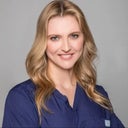It is really not possible to exactly quantify how much weight will be removed, as every manufacturers cup sizes differ, so this is not a good metric to use. More than likely you will end up larger than a C-cup, as it is also very difficult to maintain breast tissue flap and nipple-areolar viability if attempting to remove enough tissue to go from an H-cup to a C-cup.



